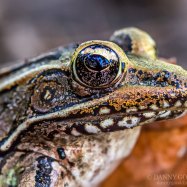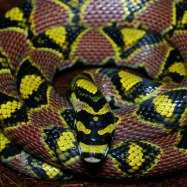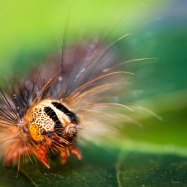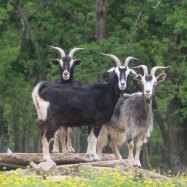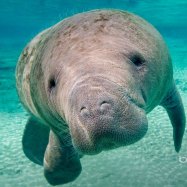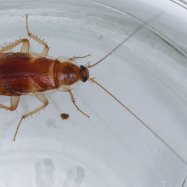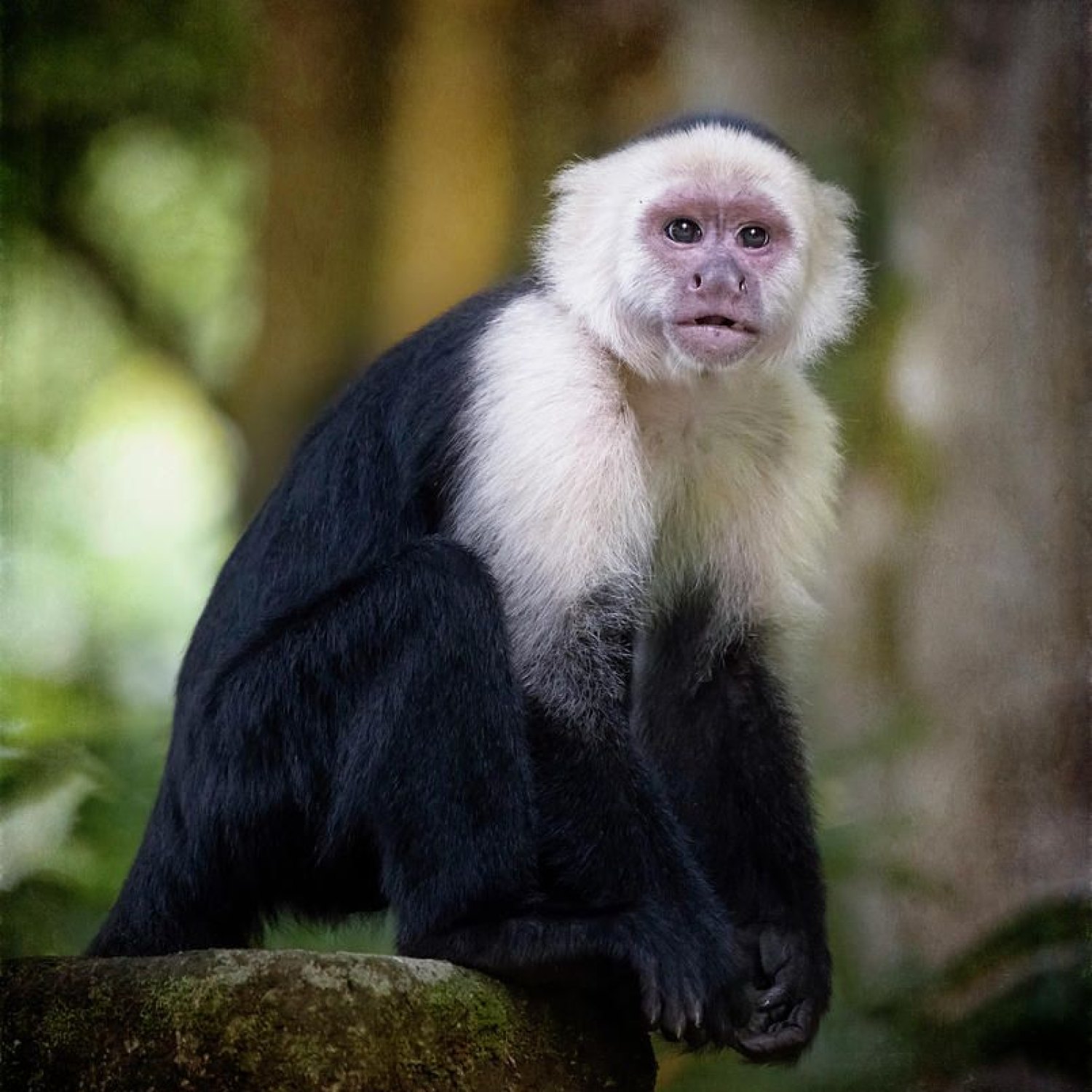
White Faced Capuchin
Adults can grow up to 35-45 cm (14-18 inches) in length
The White Faced Capuchin is a small to medium-sized monkey with a unique prehensile tail. Found in Central and South America, adults can reach 35-45 cm in length. Belonging to the Cebidae family, this intelligent primate is known for its problem-solving abilities and social behavior. #WhiteFacedCapuchin #Monkey #CentralAmerica
Animal Details Summary:
Common Name: White-faced capuchin
Kingdom: Animalia
Habitat: Tropical rainforests, dry forests, mangroves
The Fascinating World of White-Faced Capuchins
The sun is shining bright, and the lush green trees rustle in the gentle breeze. Rays of light filter through the canopy, creating a beautiful dappled effect on the forest floor. Suddenly, a group of small, curious creatures appears, swinging from branch to branch with effortless grace. As they move closer, you can see their distinctive white faces and dark fur coats White Faced Capuchin. These are the White-Faced Capuchins, one of the most intelligent and fascinating primates in the animal kingdom.Scientifically known as Cebus capucinus, these small primates belong to the Cebidae family and are part of the order Primates. They are commonly referred to as White-Faced Capuchins due to their striking white faces with black fur on their bodies. These curious creatures can be found in the tropical rainforests, dry forests, and mangroves of Central and South America, with Costa Rica being their country of origin.
White-Faced Capuchins have captured the hearts and minds of many people, from scientists studying their behavior to tourists observing them in their natural habitat. In this article, we’ll delve into the world of White-Faced Capuchins and discover what makes them such interesting and unique creatures.
Physical Characteristics
White-Faced Capuchins have a small to medium-sized body with a prehensile tail, which means their tail can grasp objects and help them in their movements. On average, adults can grow up to 35-45 cm (14-18 inches) in length, with males being slightly larger than females.Their most distinctive feature is their white faces, which stand out against the dark fur on their bodies Warthog. This facial coloring has given them the nickname "white-fronted" or "white-faced," making them easily recognizable among other primates. This combination of colors gives them a unique and striking appearance.
Apart from the difference in size, males and females also have different coloration. Adult males have a black tuft of fur on their head, which they can raise when they feel threatened or want to assert dominance. Their fur also becomes lighter as they age, and by the time they are old, it turns into a reddish-brown color.
Habitat and Distribution
White-Faced Capuchins are native to Central America, with their distribution spanning across Costa Rica, Panama, Nicaragua, Honduras, and parts of Guatemala. Within these areas, they can be found in various habitats, from dense tropical rainforests to dry forests and mangroves. They prefer to live in areas with high tree density, as it allows them to move around with ease and find their preferred food sources.These primates are highly adaptable and have been observed in both primary and secondary forests, which are areas that have been affected by human activities. However, they are still considered vulnerable due to habitat loss, which is their main threat. With the destruction of their natural habitat, these creatures are forced to adapt to new environments, which can lead to competition for resources and conflict with humans.
Feeding Behavior
White-Faced Capuchins are omnivorous, which means they eat both plants and animals. Their diet varies depending on the availability of food in their habitat, and they are known to be opportunistic feeders. Their diet consists of fruit, leaves, flowers, insects, eggs, small mammals, and even birds.They use their excellent problem-solving skills to access food, such as using tools to crack open nuts or using sticks to fish for insects. This behavior is a clear indication of their high level of intelligence and adaptability to different environments.
White-Faced Capuchins are also known to engage in a behavior called "extractive foraging." This is when they use a combination of their hands, mouth, and teeth to extract food from tight spaces such as tree crevices or holes in the ground. This unique feeding behavior showcases their ability to problem-solve and adapt to their surroundings.
Social Behavior
White-Faced Capuchins are highly social creatures and live in groups ranging from 8 to 35 individuals. These groups are usually made up of several males, females, and their offspring. Each group has a dominant male, and the hierarchy is maintained through aggressive displays and vocalizations.Their social structure is complex, with different roles and responsibilities. For example, females are responsible for taking care of the young and sharing their food with the group, while males are responsible for defending the group's territory.
One of the most interesting aspects of their social behavior is their use of vocalizations to communicate with each other. White-Faced Capuchins have a wide range of vocalizations, from high-pitched screams to low-pitched growls. These vocalizations help them to stay connected and alert to any potential threats in their environment.
Relationship with Humans
White-Faced Capuchins have a long history with humans, as they have been subjected to research, entertainment, and domestication. Unfortunately, this exploitation has had a negative impact on their populations, leading to the decline of their overall numbers in the wild.In some parts of their range, they are considered a nuisance due to conflicts with farmers over crops. In other areas, they are hunted for meat and captured for the illegal pet trade. These factors, combined with habitat loss, have put these primates at risk of extinction.
However, there are also positive interactions with humans, such as eco-tourism. In places like Costa Rica, tourists can observe White-Faced Capuchins in their natural habitat, learning about their behavior and helping to support conservation efforts. By supporting sustainable tourism, these primates can be protected, and their population can thrive.
The Future of White-Faced Capuchins
In recent years, there has been an increase in awareness and conservation efforts to protect White-Faced Capuchins and their habitats. Organizations such as the White-Faced Capuchin Project and The Costa Rica Monkey Project work towards educating the public and conducting research to better understand these creatures and their conservation needs.These efforts not only help protect White-Faced Capuchins but also preserve the delicate ecosystems they are a part of. As they play a crucial role in seed dispersal and pollination, their decline could have a devastating impact on the rainforests' health and biodiversity.
In conclusion, White-Faced Capuchins are fascinating creatures, and the more we learn about them, the more we realize how important they are to our world. Their intelligence, adaptability, and unique social behaviors make them a vital part of the natural world, and it is our responsibility to protect and preserve them for future generations.
As we continue to work towards a sustainable future, let us not forget the other inhabitants of our planet, such as the White-Faced Capuchins, who rely on us to coexist in harmony. So the next time you come across these curious creatures, take a moment to appreciate their beauty and remember to do your part in helping to protect them.

White Faced Capuchin
Animal Details White Faced Capuchin - Scientific Name: Cebus capucinus
- Category: Animals W
- Scientific Name: Cebus capucinus
- Common Name: White-faced capuchin
- Kingdom: Animalia
- Phylum: Chordata
- Class: Mammalia
- Order: Primates
- Family: Cebidae
- Habitat: Tropical rainforests, dry forests, mangroves
- Feeding Method: Omnivorous
- Geographical Distribution: Central America (Costa Rica, Panama, Nicaragua, Honduras, and parts of Guatemala)
- Country of Origin: Costa Rica
- Location: Central and South America
- Animal Coloration: White face with black fur on the body
- Body Shape: Small to medium-sized body with a prehensile tail
- Length: Adults can grow up to 35-45 cm (14-18 inches) in length
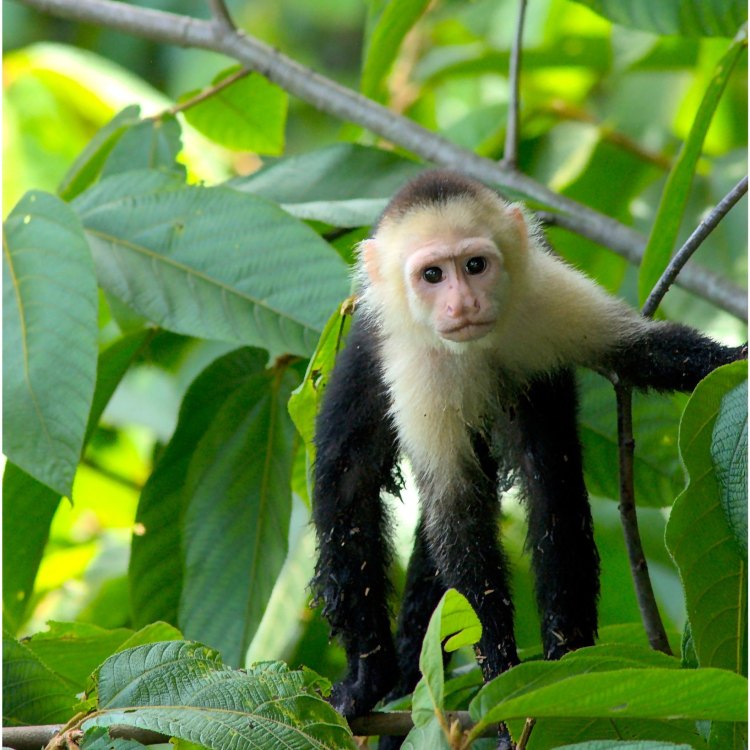
White-faced capuchin
- Adult Size: Adults weigh around 3-4 kg (6.6-8.8 pounds)
- Average Lifespan: Around 15-20 years in the wild
- Reproduction: Sexual
- Reproductive Behavior: Polygynandrous mating system (both males and females have multiple partners)
- Sound or Call: Can produce various vocalizations including screeches, whistles, and grunts
- Migration Pattern: Non-migratory
- Social Groups: Live in large social groups called troops
- Behavior: Highly intelligent and social animals known for their tool use, problem-solving abilities, and complex social interactions
- Threats: Habitat loss, deforestation, hunting
- Conservation Status: Least Concern (IUCN)
- Impact on Ecosystem: Important dispersers of seeds in their ecosystem
- Human Use: Sometimes kept as pets and used in research
- Distinctive Features: White face with black fur, prehensile tail
- Interesting Facts: White-faced capuchins are known to use tools, such as using rocks and sticks to open nuts and fruits
- Predator: Large birds of prey, big cats
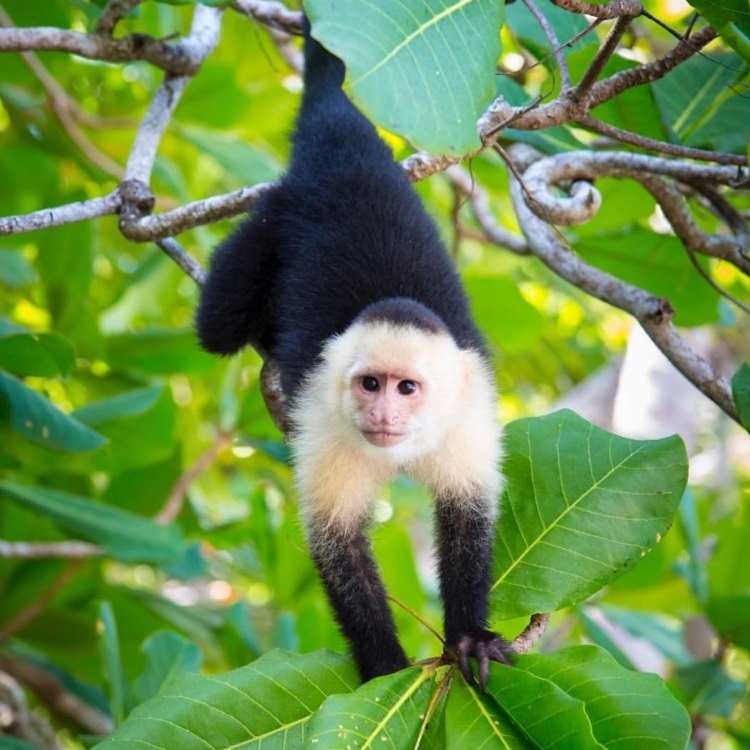
Cebus capucinus
The Fascinating World of the White-Faced Capuchin
In the lush green rainforests of South and Central America, a curious and clever species of primate can be found, known as the white-faced capuchin. These intelligent and social creatures, with their distinctive white faces and unique behaviors, have captured the interest of researchers and animal lovers alike.Adult white-faced capuchins weigh around 3-4 kg (6.6-8 PeaceOfAnimals.Com.8 pounds) and have a lifespan of 15-20 years in the wild, making them relatively small compared to other primates. This, however, does not make them any less fascinating. In fact, their size and unique features make them stand out in the animal kingdom.
Reproduction in white-faced capuchins is sexual, with a polygynandrous mating system. This means that both males and females have multiple sexual partners within their social group. This behavior helps to ensure genetic diversity within the population, increasing their chances of survival.
One of the most intriguing aspects of white-faced capuchins is their vocalizations. These clever creatures are capable of producing various calls, including screeches, whistles, and grunts, which are used for different purposes, such as communication and warning signals. They have a complex system of communication, and scientists are still studying and decoding their vocalizations to better understand their behavior and social interactions Whinchat.
Unlike some other primate species, white-faced capuchins are non-migratory, meaning they do not move from one place to another in search of food or shelter. They are territorial animals and have a defined home range, which they defend from other troops.
Speaking of troops, white-faced capuchins are highly social animals and live in large groups called troops. These troops can consist of 10 to 35 individuals, and they have a complex social hierarchy. The alpha male and female are the leaders of the group, with the male having a dominant position in decision-making, while the female holds a higher rank in the social hierarchy.
Capuchins are highly intelligent animals and are known for their problem-solving abilities and tool use. They have been observed using tools, such as rocks and sticks, to open nuts and fruits, showcasing their impressive cognitive abilities. They are also known to use tools for other purposes, such as digging for insects or to impress potential mates.
Aside from their intelligence, white-faced capuchins are known for their complex social interactions. They have a strong bond within their troop and rely on each other for survival. They groom each other to strengthen their social bond and also engage in play, which not only serves as a form of recreation but also helps them practice skills that are necessary for their survival.
Unfortunately, the white-faced capuchin population is facing threats in their natural habitat. Habitat loss due to deforestation and human encroachment is one of the primary threats they face. These animals also fall victim to hunting for their meat and use in traditional medicines. Despite these challenges, white-faced capuchins are currently listed as Least Concern on the International Union for Conservation of Nature (IUCN) Red List. However, continuous monitoring and conservation efforts are needed to ensure their survival in the future.
The white-faced capuchin is a vital part of their ecosystem, as they are important dispersers of seeds. As they move through the forest, they consume fruits and nuts, and later disperse them through their feces. This helps in seed germination and maintaining the balance of the ecosystem. Without them, the forest's biodiversity and health would suffer.
Human use of white-faced capuchins also poses a threat to their population. These animals are sometimes taken from the wild and kept as pets. This not only causes stress and harm to the individual capuchin, but it also disrupts the social structure of their troop. Furthermore, they are also used in biomedical research, which can often be harmful.
The unique features of white-faced capuchins make them a popular choice for research. They have prehensile tails, which means they can use them to grasp and hold onto objects. Their white faces and black fur make them easy to identify, and their intelligence and social behaviors make them intriguing subjects for scientists to study.
In their natural habitat, white-faced capuchins have predators to watch out for, such as large birds of prey and big cats. However, their intelligence and agility help them avoid these predators and contribute to their overall survival in the wild.
In conclusion, the world of white-faced capuchins is a fascinating and complex one. From their social behaviors to their problem-solving abilities and intelligence, these animals have captured the hearts and minds of researchers and animal enthusiasts. As we continue to learn more about them, it is crucial to protect and conserve their habitat to ensure their survival and maintain the balance of our ecosystems.
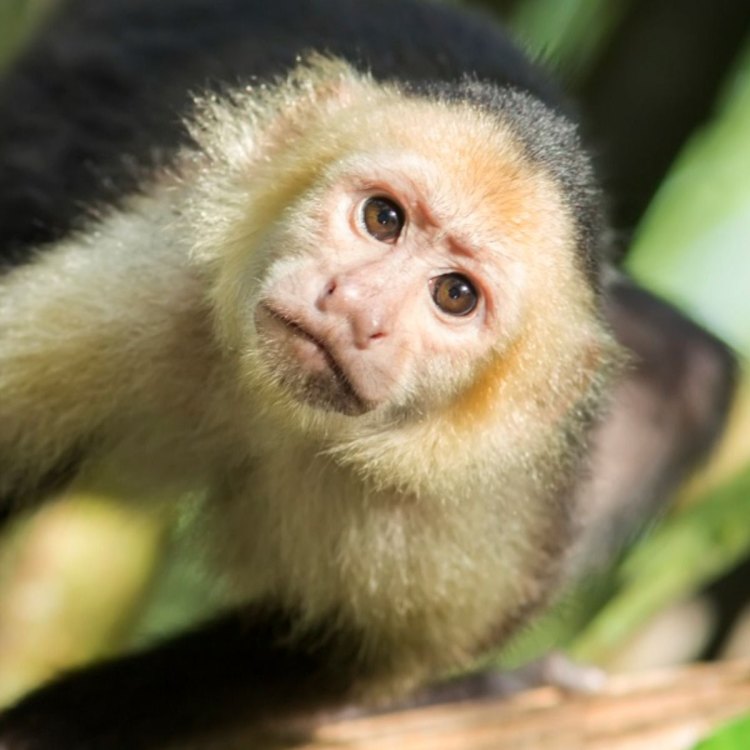
The Fascinating World of White-Faced Capuchins
Disclaimer: The content provided is for informational purposes only. We cannot guarantee the accuracy of the information on this page 100%. All information provided here may change without prior notice.


